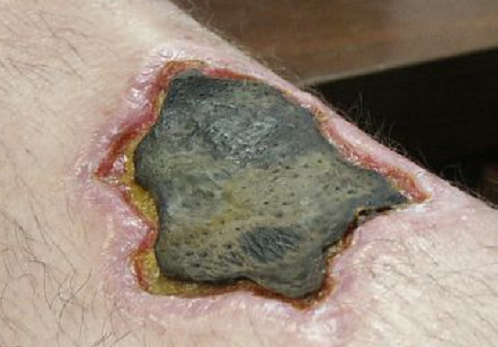7 Krokodil Drug Facts: All You Need To Know in Under 5 Minutes

The opioid crisis has made drugs like codeine, morphine, and oxycodone household names in America. Aside from these more commonly known drugs, there are also the more sensational ones due to their strength such as fentanyl, carfentanil, and the recently FDA-approved Dsuvia (sufentanil). And just a few years back, another opioid derivative hit the US headlines - Krokodil. The drug was supposedly proliferating in Russia and news reports were playing up how it causes a user to turn reptile-like complete with green, scaly skin! While it may sound totally ridiculous, this drug is certainly no laughing matter.
In recent months, Americans looking up the term ‘Krokodil’ online has significantly increased by the hundreds of thousands. While this might not directly relate to drug use and the numbers are way lower than the search volume for marijuana or heroin, the interest in this drug is still quite alarming. Does this signify that this drug may be lurking around in America? We don’t really know for sure but it would still be useful to learn more about the drug and its horrifying effects.
Contact Us Today for a Confidential Assessment.
Call (877) 959-5909 Now to Speak with a Specialist
1. Origins
Krokodil is the street name of the drug Desomorphine, which is an opiate derivative that was first synthesized in the United States back in 1932. Just like other opioids such as heroin and codeine, Desomorphine has sedative and analgesic effects. In the United States, Desomorphine is considered a Schedule I substance which means it has no accepted medical use and has a very high abuse potential.
2. The Russian Connection
Russia is said to be the ground zero of Krokodil abuse where it became a much cheaper heroin alternative. Also called Poor Man’s Heroin and Russian Magic, there are an estimated one million users in Russia. However, the drugs making their rounds in Russia, Ukraine, Germany, Kazakhstan, Norway, and Georgia were not made in a laboratory. Instead, these are homemade versions of the drug created by mixing codeine with other substances.
3. Reptile Skin Effect
This homemade mix is referred to as ‘Krokodil’ because injecting the drug causes greenish/greyish/blackish scale-like skin discolorations resembling crocodile skin in the area where it was injected. Photos of people having green, scaly blotches emerged which somehow reinforced the term use.
4. Zombie Drug
Even before Flakka got its reputation as a zombie drug, Krokodil was already being rumored to turn users into zombies. This is because the drug was also found to cause tissue damage which prompted the media to proclaim Krokodil as the deadly, flesh-eating drug people should be scared of.
5. Strength
Because it is an opioid derivative, it provides similar effects delivered by other opioid drugs such as feelings of wellbeing, relaxation, lethargy, and sedation. The drug gives also provides a euphoric, pain-numbing effect that is highly addictive and roughly ten times stronger than morphine.
6. Fast Yet Short Effects

7. Krokodil in the US
In the United States, there were only a small number of accounts regarding Krokodil use dating back to 2013. There was a report in September 2013 about two Krokodil cases in Arizona, supposedly the first in the US. Then just a month after, Fox News reported that two users from Chicago thought they were buying cheap heroin until they developed skin lesions.
But aside from these isolated cases, Krokodil was not widely adopted by users nor was it seen readily available on the streets. However, this does not guarantee that Krokodil is not really being used in the US. There are reportedly addicts who try to manufacture the drug themselves with recipes available online. This makes the homemade substance much more dangerous to the body, especially for people who are not aware of the disturbing side effects.
If you feel that you are struggling with substance addiction, there are specialized treatment programs that can help you on your path to recovery.
Contact Anaheim Lighthouse, help is available today.













